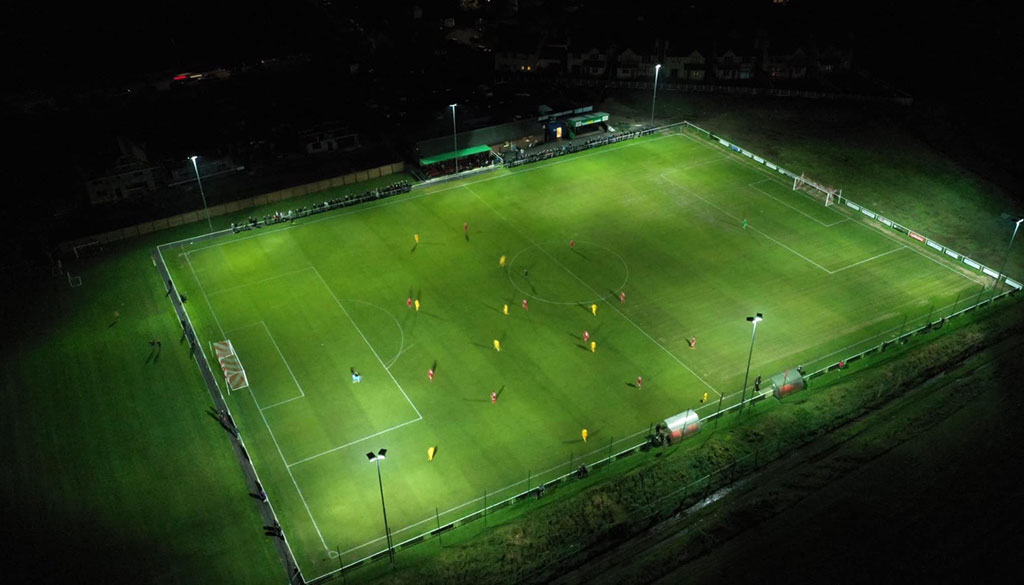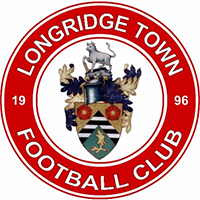
Emblematically Speaking - Longridge Town
Tue 30th October 2018 | Longridge Town | By Stewart Taylor
Throughout this series we have seen many clubs using the coat of arms of the town they represent as their emblem.
This is very useful in a number of ways, not the least of which is that careful study of a coat of arms can lead us to an understanding of which local features were significant to the town at the time that coat of arms was adopted.
However, the reasons for the incorporation of certain devices are not always apparent. When this is the case the field is open, so to speak, for a bit of speculation. On that basis, here we go with the emblem of Longridge Town FC.
Perhaps we should deal with the parts which are known and for that we need a description.
If I were to give you the description in heraldic terms I’m sure that a good number, being proficient in Medieval French, would have no problem understanding it. However, to make things easier for me we will go with slightly more modern English.
The arms display a gold chevron with two red roses with a green chevron below featuring an eagle’s leg. In between we see three white bars on a black background.
The crest consists of a white bull in the passant pose with the right foot resting on a gold shuttle. The coat of arms is encased within a red roundel which clearly identifies the football club.
It is worth noting at this point that the red roundel is a very recent addition which was introduced to celebrate the promotion of the club into the Hallmark Security League (NWCFL) and the colour reflects the club playing colours.
So what do we know about the origins of the coat of arms and what are we going to have to speculate about?
What we know is that the coat of arms comes from the now defunct Longridge Urban District Council and is dated 1954. It was transferred to Longridge Town Council in 1974 following the introduction of the almost legendary Local Government Act (1972) which, as we have seen previously, has a lot to answer for to the students of local history.
If we look first of all at the arms, we can see two red roses as the traditional and much revered symbol of Lancashire. The green and gold colours of the chevron type devices are said to come from the de Lacy family who were prominent in the area many centuries ago.
Early members of this family came to England with the Norman Conquest in the 11th century and, due to their loyalty to William the Conqueror, were given large tracts of land in England one of which was the Blackburn Hundred which covered a large area including the Ribble Valley.
We could perhaps interject here to say that the town of Longridge was derived from an area known, not surprisingly, as Long Ridge, which marks the northern side of the Ribble Valley.
This leaves us with the eagle’s foot and the three white bars to try to interpret.
There are references in heraldry to the use of feet as devices but it is not at all clear, at least to me, what they represent. Having said that, if we go back to the late 15th century we can see an eagle’s foot referenced in the arms of Lancaster – perhaps this is relevant.
The bars could well be interpreted as representing conscience, religion and honour. Three virtues which were particularly useful back in medieval times to ward off the twin scourges of evil temptation and angry passion. The white (argent) colour normally signifies peace and sincerity.
If we now move on to the crest we can have a think about the bull. It has been said that the bull represents local agriculture and, on the basis that we often see references to local commercial activities, that interpretation is given credence by the presence of the gold coloured shuttle given that in the late 19th century some 60 – 70% of the local population was employed in the textile industry.
However, there is another interpretation and that is that the bull forms the crest because the Mayor of the town at the time of incorporation of the crest liked bulls.
In looking into the possibilities behind this there was a report in the Lancashire Telegraph in 2004 which describes a discussion on the nature of the bull which at least one councillor described as “effeminate”.
To cut a long discussion short, the design is all now agreed and is used by a number of groups around the town.
With thanks to Dave Walker of Longridge Town FC for his contribution to this article.
 Emblematically Speaking - Longridge Town
Emblematically Speaking - Longridge Town
Tue 30th October 2018 | Longridge Town
By Stewart Taylor

Throughout this series we have seen many clubs using the coat of arms of the town they represent as their emblem.
This is very useful in a number of ways, not the least of which is that careful study of a coat of arms can lead us to an understanding of which local features were significant to the town at the time that coat of arms was adopted.
However, the reasons for the incorporation of certain devices are not always apparent. When this is the case the field is open, so to speak, for a bit of speculation. On that basis, here we go with the emblem of Longridge Town FC.
Perhaps we should deal with the parts which are known and for that we need a description.
If I were to give you the description in heraldic terms I’m sure that a good number, being proficient in Medieval French, would have no problem understanding it. However, to make things easier for me we will go with slightly more modern English.
The arms display a gold chevron with two red roses with a green chevron below featuring an eagle’s leg. In between we see three white bars on a black background.
The crest consists of a white bull in the passant pose with the right foot resting on a gold shuttle. The coat of arms is encased within a red roundel which clearly identifies the football club.
It is worth noting at this point that the red roundel is a very recent addition which was introduced to celebrate the promotion of the club into the Hallmark Security League (NWCFL) and the colour reflects the club playing colours.
So what do we know about the origins of the coat of arms and what are we going to have to speculate about?
What we know is that the coat of arms comes from the now defunct Longridge Urban District Council and is dated 1954. It was transferred to Longridge Town Council in 1974 following the introduction of the almost legendary Local Government Act (1972) which, as we have seen previously, has a lot to answer for to the students of local history.
If we look first of all at the arms, we can see two red roses as the traditional and much revered symbol of Lancashire. The green and gold colours of the chevron type devices are said to come from the de Lacy family who were prominent in the area many centuries ago.
Early members of this family came to England with the Norman Conquest in the 11th century and, due to their loyalty to William the Conqueror, were given large tracts of land in England one of which was the Blackburn Hundred which covered a large area including the Ribble Valley.
We could perhaps interject here to say that the town of Longridge was derived from an area known, not surprisingly, as Long Ridge, which marks the northern side of the Ribble Valley.
This leaves us with the eagle’s foot and the three white bars to try to interpret.
There are references in heraldry to the use of feet as devices but it is not at all clear, at least to me, what they represent. Having said that, if we go back to the late 15th century we can see an eagle’s foot referenced in the arms of Lancaster – perhaps this is relevant.
The bars could well be interpreted as representing conscience, religion and honour. Three virtues which were particularly useful back in medieval times to ward off the twin scourges of evil temptation and angry passion. The white (argent) colour normally signifies peace and sincerity.
If we now move on to the crest we can have a think about the bull. It has been said that the bull represents local agriculture and, on the basis that we often see references to local commercial activities, that interpretation is given credence by the presence of the gold coloured shuttle given that in the late 19th century some 60 – 70% of the local population was employed in the textile industry.
However, there is another interpretation and that is that the bull forms the crest because the Mayor of the town at the time of incorporation of the crest liked bulls.
In looking into the possibilities behind this there was a report in the Lancashire Telegraph in 2004 which describes a discussion on the nature of the bull which at least one councillor described as “effeminate”.
To cut a long discussion short, the design is all now agreed and is used by a number of groups around the town.
With thanks to Dave Walker of Longridge Town FC for his contribution to this article.


